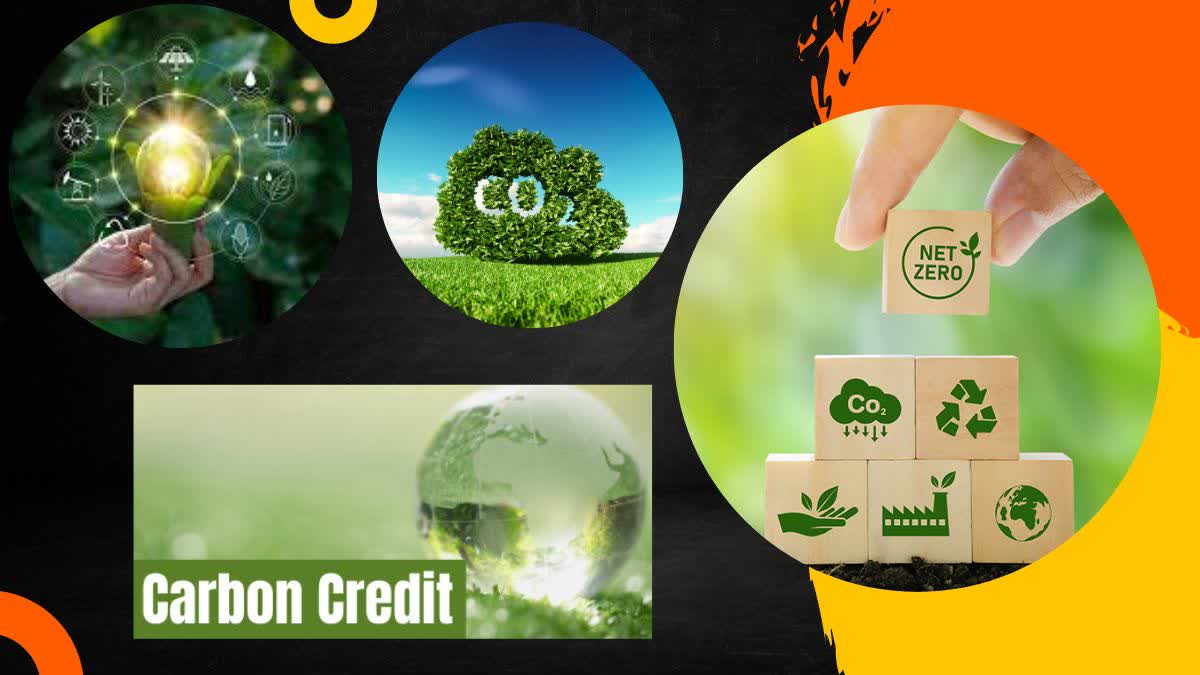

In a bid to combat the escalating crisis of air pollution, Carbon Credit has emerged as a potential cure. Delving into the chemical intricacies, it becomes evident that carbon, a ubiquitous element in every living organism, plays a pivotal role in the universe’s composition. Unveiling the roots of the issue, fossil fuels like petrol-diesel and coal, identified as hydrocarbons, unleash carbon when burned, contributing to the alarming levels of air pollution.
Fossil Fuel Combustion and the Birth of Greenhouse Gases – A Global Challenge
Chemistry reveals that fossil fuels, formed over millions of years as the remains of deceased plants and marine animals, become hydrocarbons—compounds comprised of hydrogen and carbon. The extraction of crude oil from the sea by Reliance’s refineries mirrors the transformation of once-buried organisms into fossil fuels. Similarly, coal originates from the ancient burial of wood and animals, containing both hydrogen and carbon.
The perpetual nature of these resources highlights the inevitable release of carbon when traditional fossil fuels are burned. These gases, emitted primarily from industrial chimneys, have plunged the Earth’s air into a state of deterioration.
The Balancing Act in Mitigating Air Pollution without Halting Progress
The Role of Carbon Credit – Bridging the Gap Between Development and Environmental Preservation
As the global community grapples with the challenge of reducing air pollution, the second approach proposes a paradigm shift—transitioning industries to fuels that do not contribute to pollution. The vision entails powering all industries with renewable energy resources such as solar and wind energy, effectively reducing carbon emissions to zero. However, this ambitious aspiration remains distant and faces practical hurdles. Achieving a scenario where all countries achieve negative carbon emissions, akin to Bhutan, is presently unattainable. Prime Minister Modi, in the COP 26 conference under UNFCCC in November 2021, set the target of achieving zero carbon emissions by 2070.
In light of the formidable challenges, a middle path emerges—the concept of Carbon Credit. This innovative solution aims to strike a balance, preventing a standstill in development without exacerbating air quality concerns. But how does it work? Let’s delve into the intricacies.
Carbon Credit
Initiated by the ‘United Nations Framework Convention on Climate Change’ (UNFCCC), the Kyoto Protocol, formed in 1997, laid down rules for countries signing the agreement to regulate greenhouse gas emissions. The commitment was to implement emission reduction measures within their local industries. Subsequently, the Paris Agreement of 2015 garnered consensus from 195 countries worldwide, introducing norms specifying that no country or industry could surpass a ‘fixed limit’ of carbon dioxide or its greenhouse gas equivalents. The determination of this limit gave rise to the concept of carbon credit, with one unit equivalent to one ton of carbon dioxide or a similar greenhouse gas.
The condition stipulated that any country could only emit as many tonnes of greenhouse gas as the quantity of carbon credits it possessed. If all countries and industries adhered to this limit, three critical outcomes would have been averted:
First: The escalation of pollution would be curbed;
Second: Industries would not be compelled to accrue additional carbon credits.
Third:The inception of the carbon credit transaction business would have been avoided.
However, as limits and conditions are often breached, the business of earning and trading carbon credits emerged—a phenomenon colloquially known as carbon trading.
Earning and trading of carbon credits
Consider a hypothetical scenario where a nation, let’s say America, signs the Kyoto Protocol and is allocated a limit of 5 carbon credits for its carbon emissions. This signifies that America can emit a maximum of 5 tons of carbon dioxide. However, if America exceeds this limit, it faces two choices.
Technological Innovation: America can invest in developing new technologies to curtail industrial carbon emissions, ensuring compliance with its carbon credit limit. This allows industries to continue normal operations without breaching the allocated limit.
International Investment: Alternatively, if technological solutions are not feasible domestically, America can explore projects in other countries aimed at reducing greenhouse gas emissions. This could involve initiatives like installing solar panels, establishing wind energy plants, or engaging in tree plantation projects in the foreign country.
How Carbon Credits Work: The Investment and Return
Suppose an American company invests in a project in another country that successfully reduces carbon dioxide emissions by 1 ton. In return, the investing company receives 1 carbon credit. This ratio holds true for larger emission reductions—100 tonnes reduced would yield 100 carbon credits. These credits, though earned in a different country, can be utilized by the American company back home. Essentially, the company gains permission to emit an additional 100 tonnes of carbon in a project within its own country.
The business of earning and trading carbon credits has given rise to carbon trading. In a notable joint venture, Netherlands-based Royal Dutch Shell and Indore’s EKI are collaborating to earn Rs 11.5 crore in carbon credits.
EKI, with a presence since 2009, collaborates with companies emitting excess carbon or utilizing carbon offsets. With approximately 2500 clients across 40 countries, including notable names like the World Bank, Indian Railways, NTPC, Adani Group, SoftBank Group, Aditya Birla Group, and NHPC, EKI facilitates the buying and selling of carbon credits.
Small-Scale Success Stories: Local Initiatives for Global Impact
Beyond large-scale ventures, even small-scale efforts contribute to cleaning the Earth’s air. Organizations such as the Indore Municipal Corporation and Delhi Metro Rail Corporation (DMRC) have ventured into carbon credit projects. Indore’s Municipal Corporation installed bio-methanation plants in 2020, preventing 1.7 tonnes of carbon emissions and earning Rs 50 lakh. Similarly, DMRC earned Rs 19.5 crore from selling about 3.5 million carbon credits.